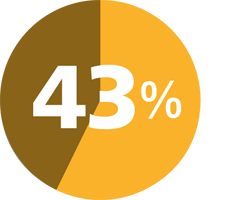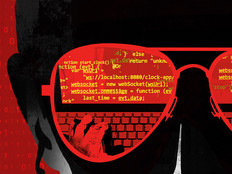Consumer IT in the Workplace: Is History Repeating Itself?
When people talk about the consumerization of IT, the discussion typically veers toward bring-your-own-device initiatives. But the growing trend encompasses much more than just workers bringing their personal smartphones or tablets to the office.
At the dawn of the PC decades ago, IT innovation sprung up in retail storefronts. Users who experienced the productivity benefits of those computers were excited about new spreadsheet and word processing applications that freed them from the mainframes lurking in the data center.
Today, consumer technologies are permeating government and businesses at a rapid pace, causing an industry shift that is changing the very nature of how organizations procure IT products and services. The "Consumerization of Enterprise IT" December 2011 study from the Accenture Institute for High Performance finds that 24 percent of employees admit to coming up with their own consumer technology solution to help solve a business problem.
A Stocked Toolbox
Social media tools such as Facebook, Twitter and Google+ have added to this trend, and it's become common for government agencies to utilize them in the workplace: Employees embraced these first, and then organizational use and policies followed.
It's not much of a stretch to say the same about software as a service. Whether people realize it or not, anyone who used Yahoo e-mail, online banking or Netflix streaming video at home was an early adopter of SaaS. Today, workers tap FaceTime, Jabber or Skype for video conferencing and Dropbox or SugarSync for cloud storage and file transfer. Then there's the quickly multiplying collection of iPhone and Android devices and the array of mobile apps users download to run on them.
24% of employees admit to coming up with their own consumer technology solution to help solve a business problem.
Employees have become resourceful at using whatever tools they need to get the job done. As technologies emerge first in the consumer market, this effectively bypasses the IT department and forces IT managers to adapt.
According to the results of Information Week's 2012 Consumerization of IT survey, organizations are increasingly receptive to consumer-centric technology such as the iPad or other tablets. Nearly a quarter of enterprise IT pros say their organizations treat these emerging technologies like any new tech development and quickly look to see if they can leverage it internally — up from 14 percent in 2010. Likewise, 33 percent of respondents say they're accepting of such technology and let employees try it out, compared with only 18 percent in 2010.

Percentage of IT decision-makers who says people in their organizations take it upon themselves to use cloud computing services or resources not provided by the IT department in order to expedite their work
SOURCE: Rackspace Hosting (June 2012)
Adapt and Evolve
Given the widespread popularity of BYOD, IT leaders must consider how they are going to pay for and support these devices. Under the traditional computing model, the agency was usually on the hook to replace devices that were broken or lost. Some organizations are now asking employees to take on more responsibility by purchasing a support plan and device insurance. (See"Controlling the Costs of BYOD" on Page 37.)
And then there are the applications. Will state and local governments develop mobile apps for their internal user groups? If so, on what platforms?
Regardless of what devices or applications workers use, the main concern is securing and managing the government department's content. That's where mobile information management (MIM) tools and services come in. MIM blends the best of mobile device management and mobile application management. Not only can the technology help organizations guard against security breaches or data loss, but it can also prove useful in meeting compliance requirements.
The consumerization of IT is here. IT leaders in state and local government need to recognize consumer usage in the workplace, but they also need the systems in place to protect organizational property and data.







